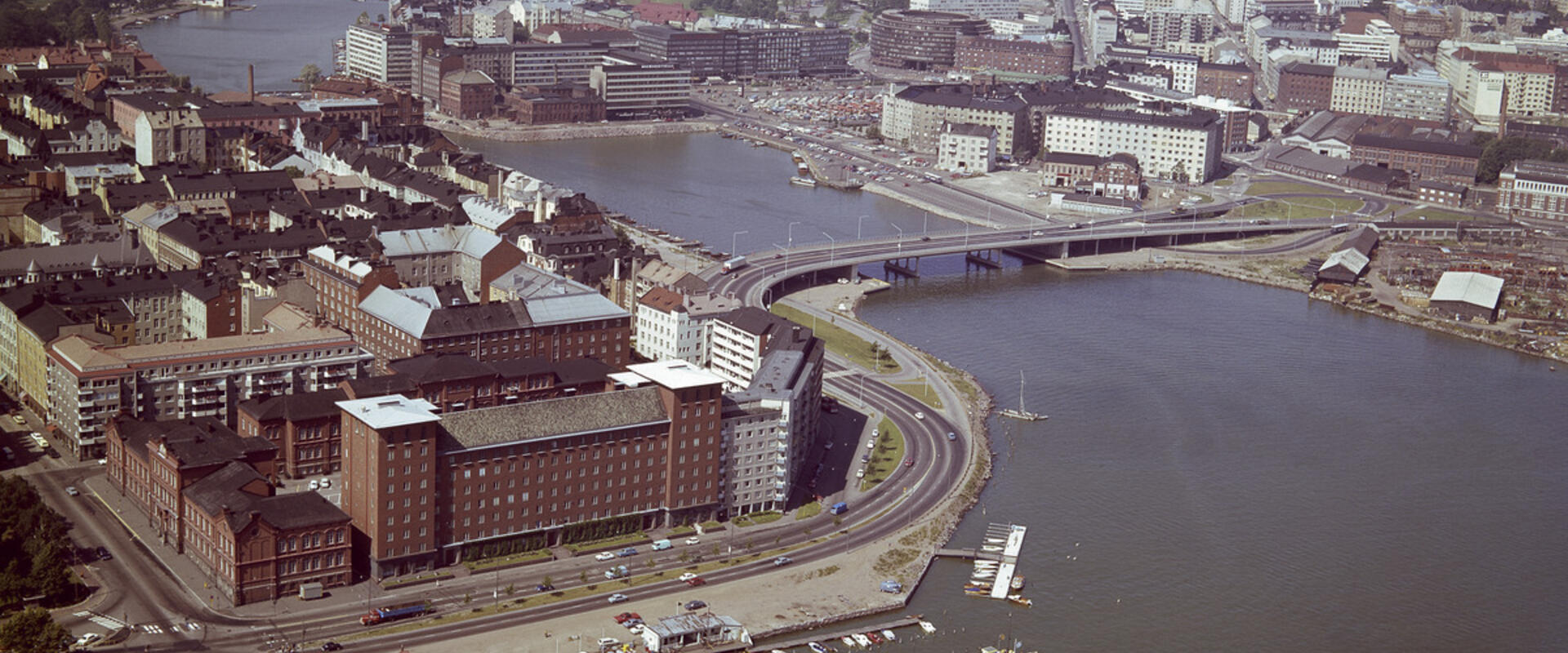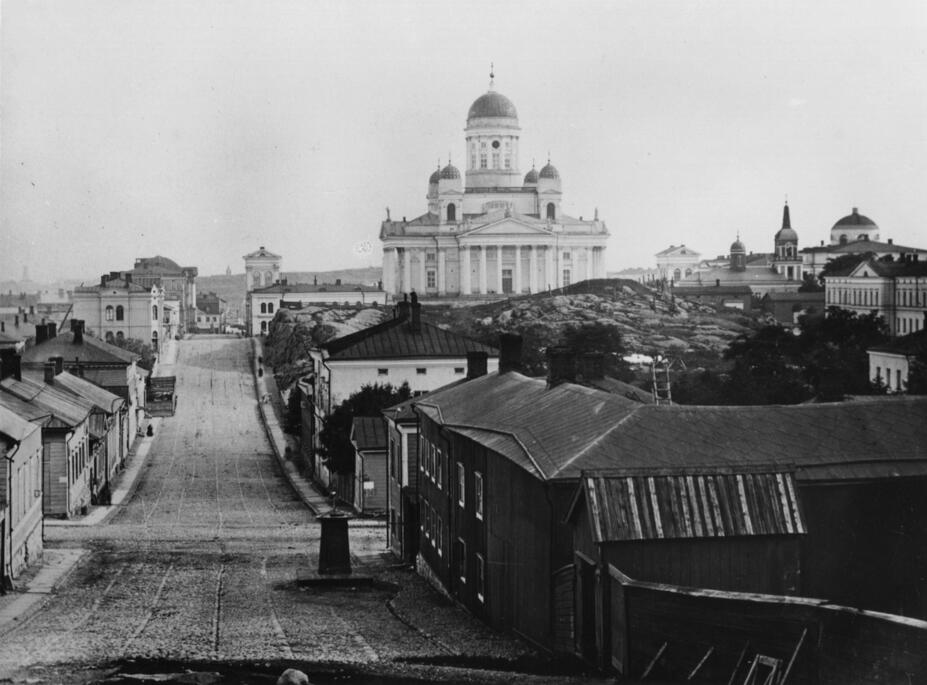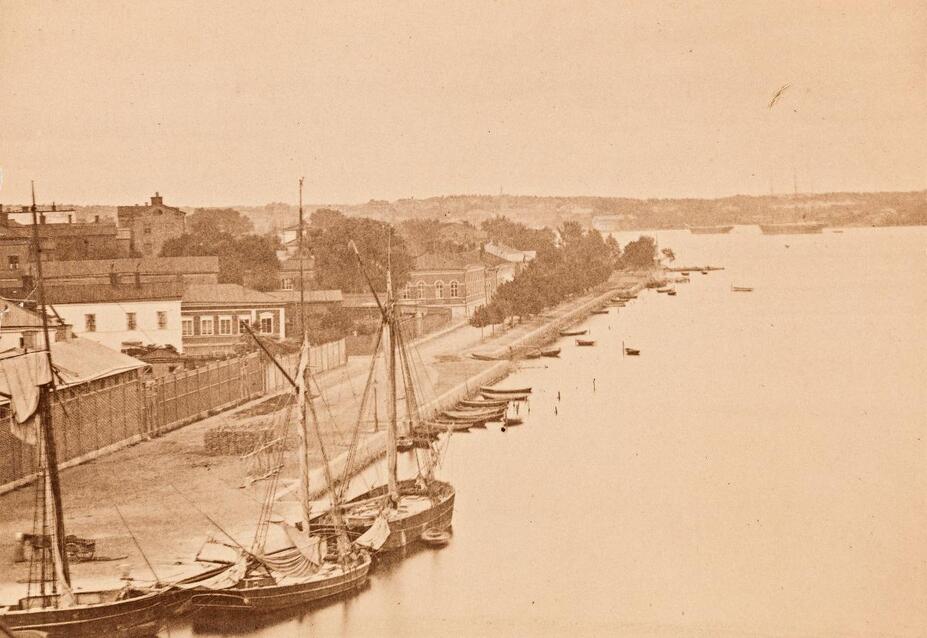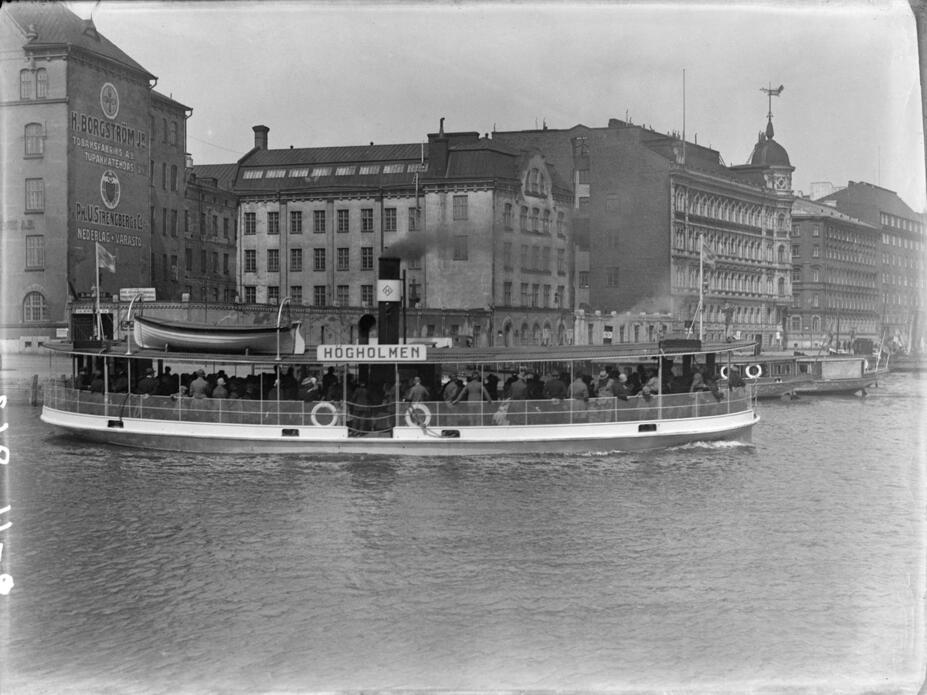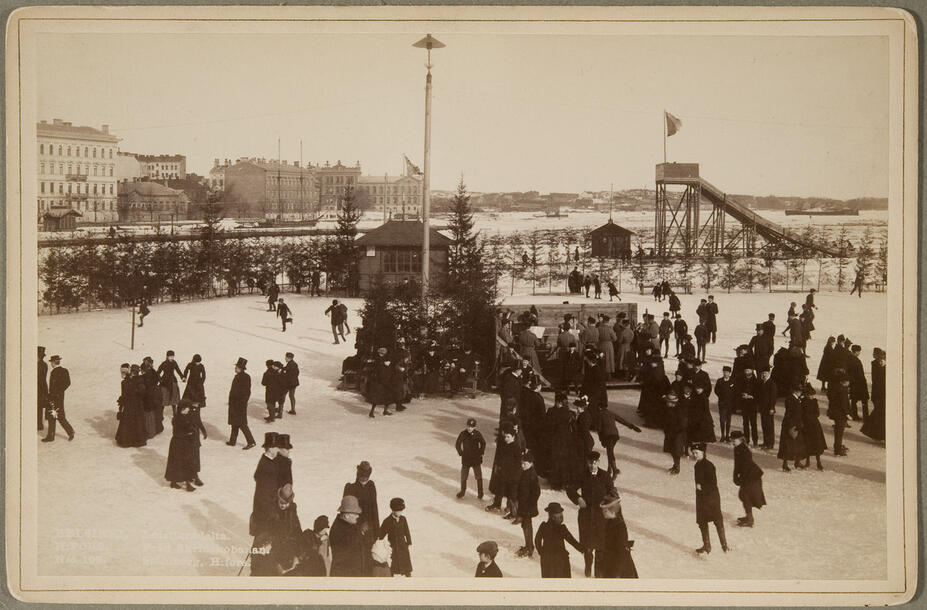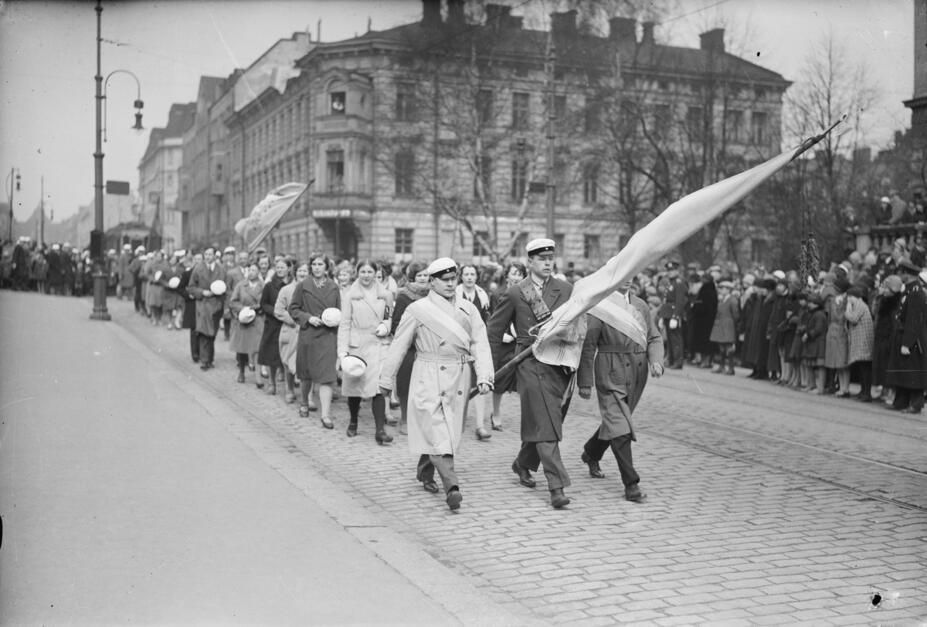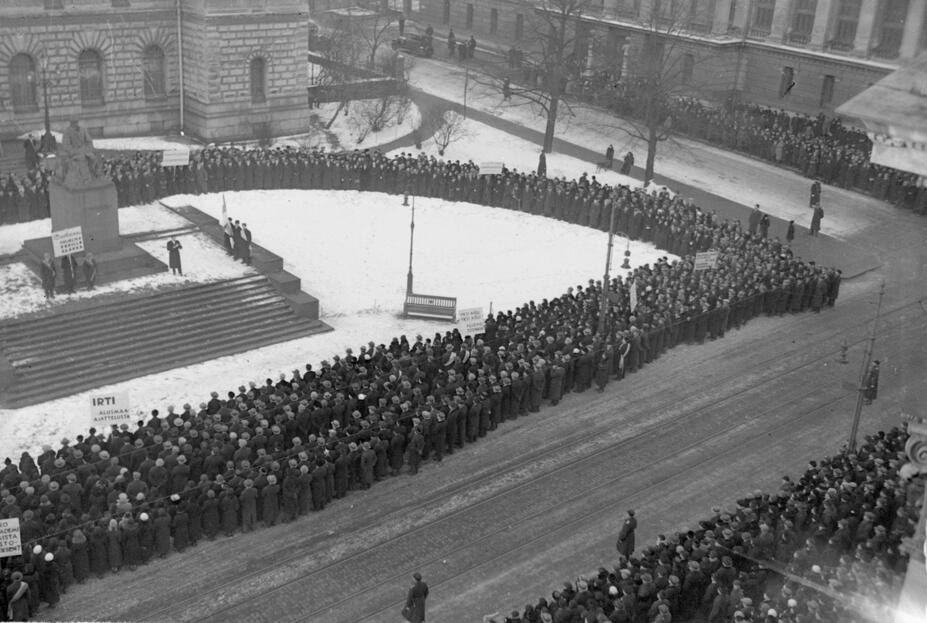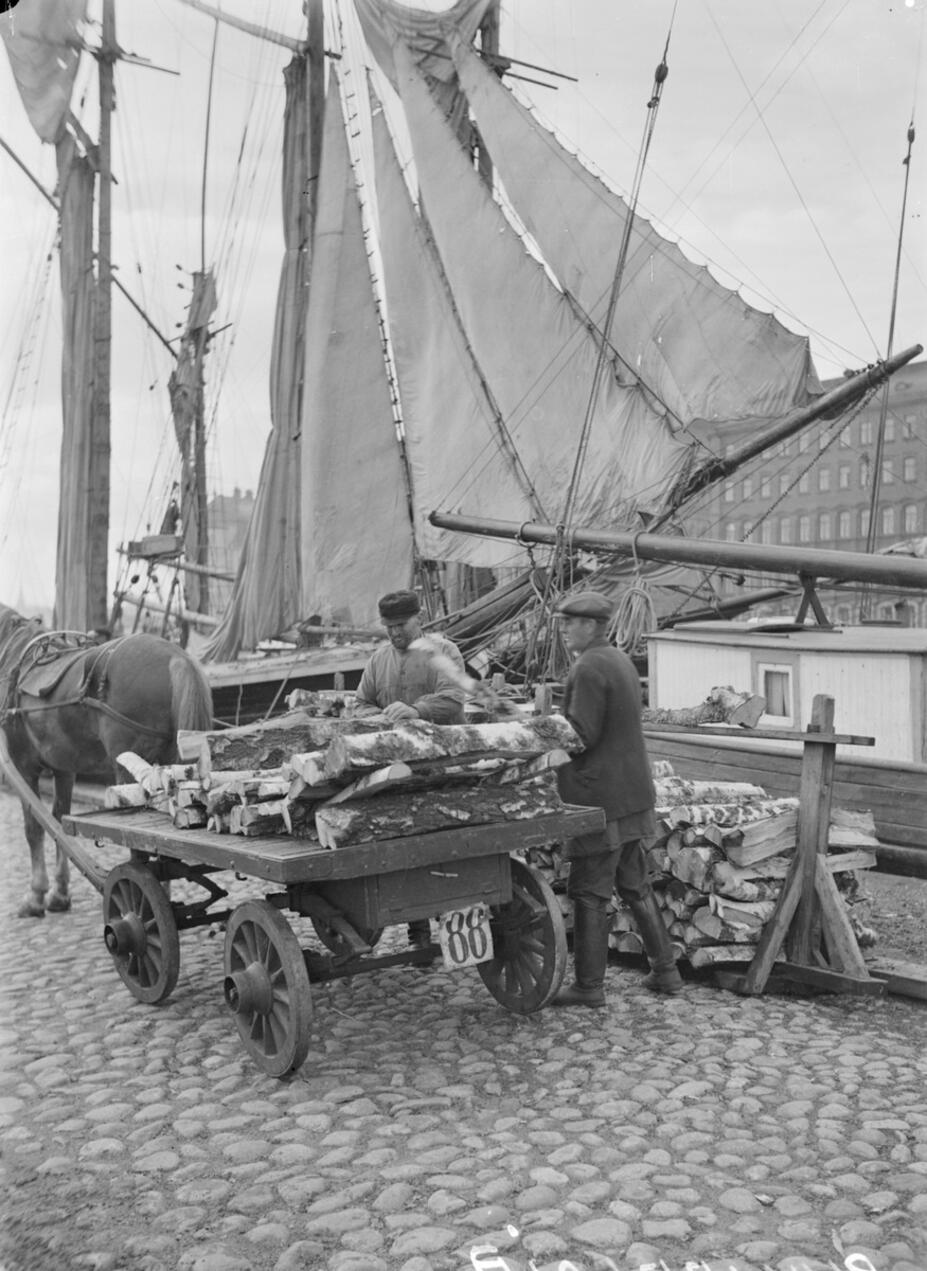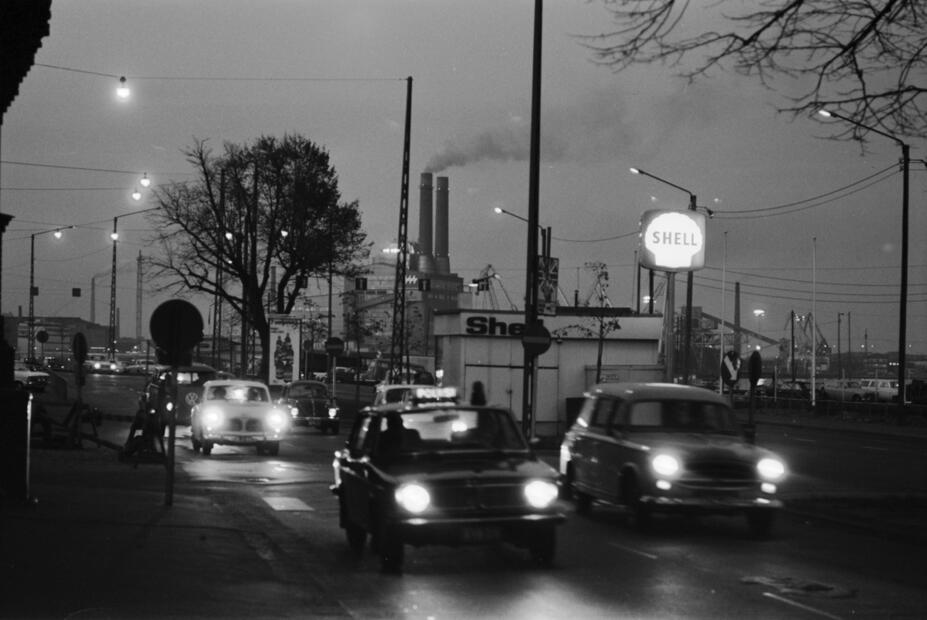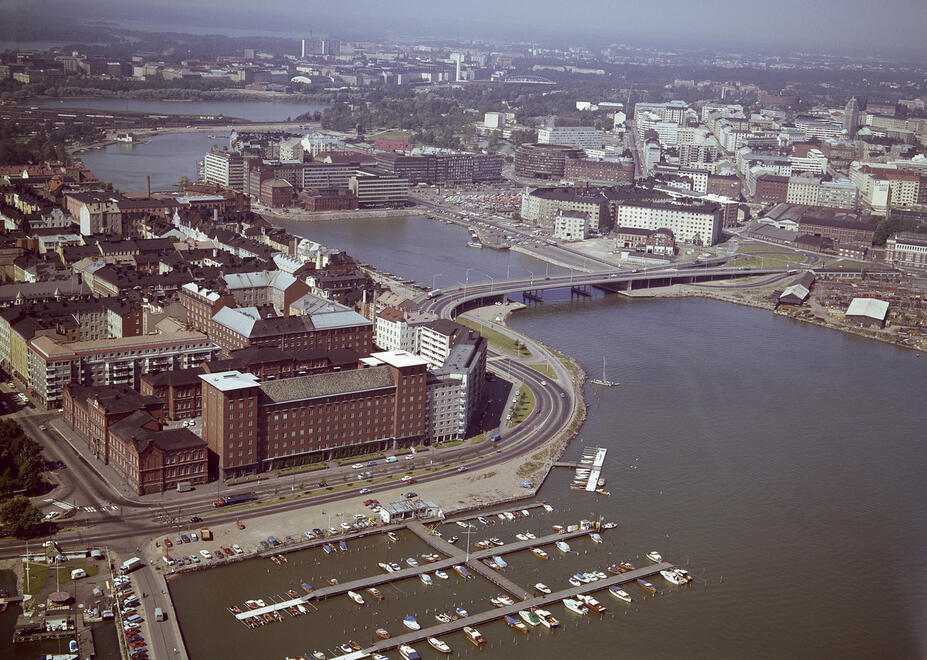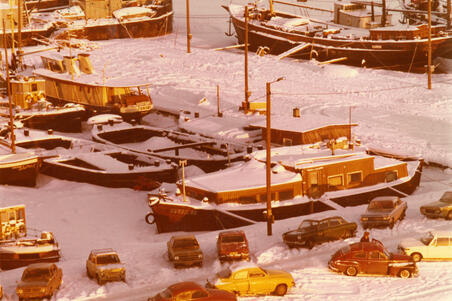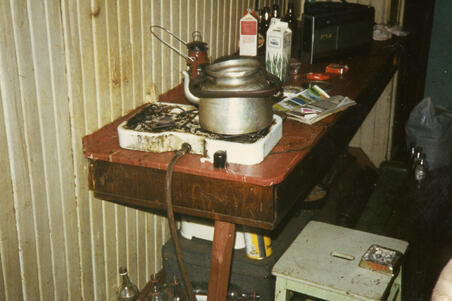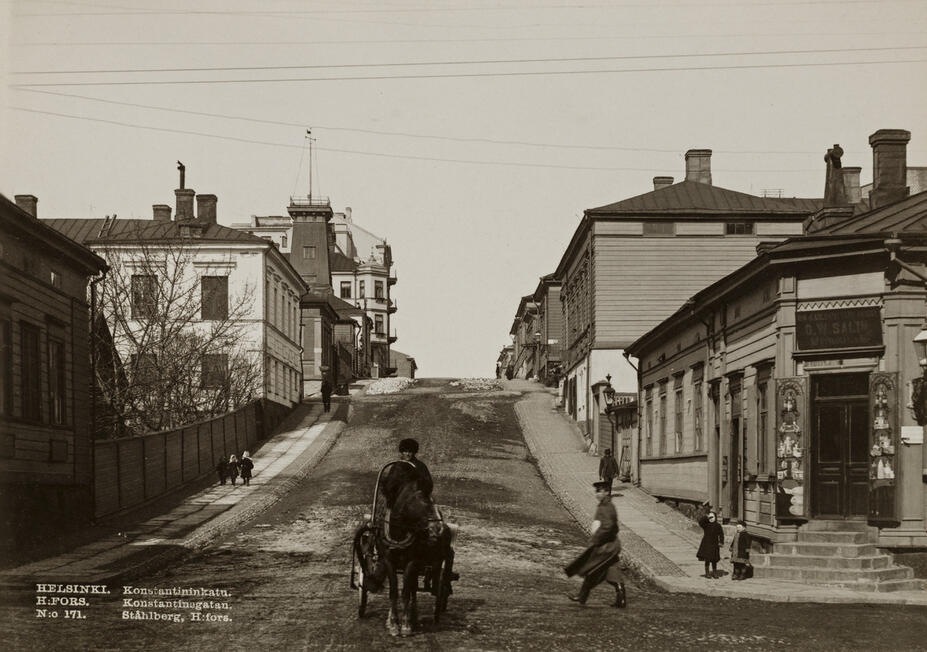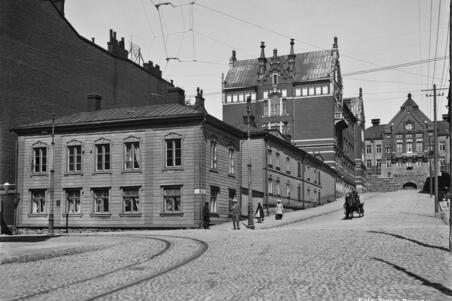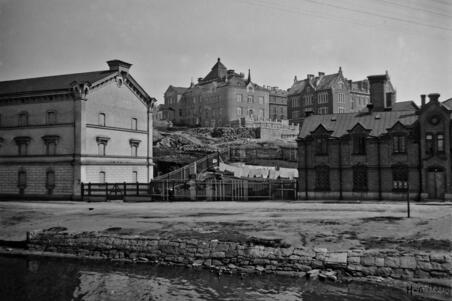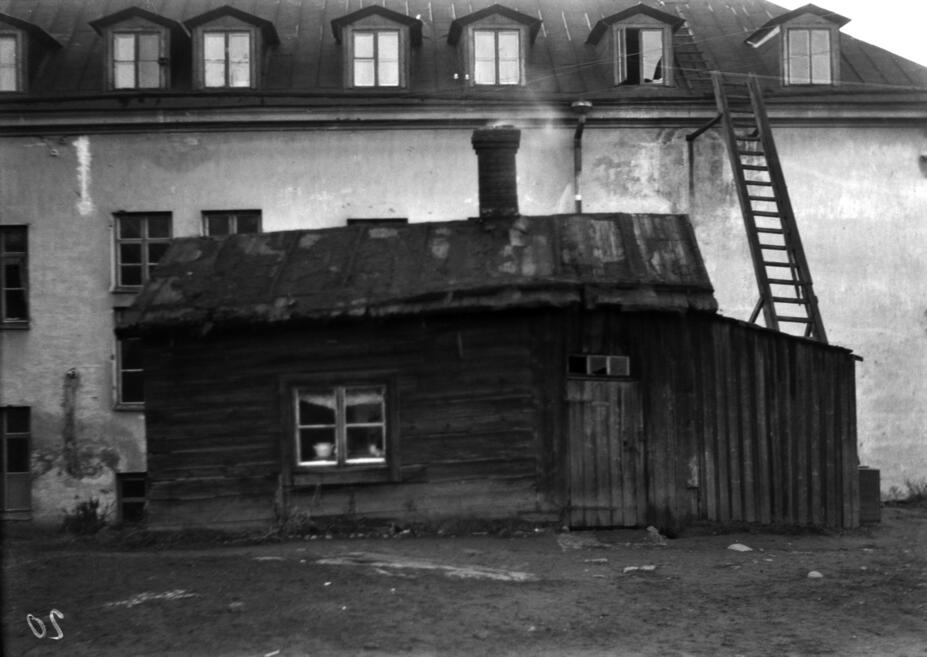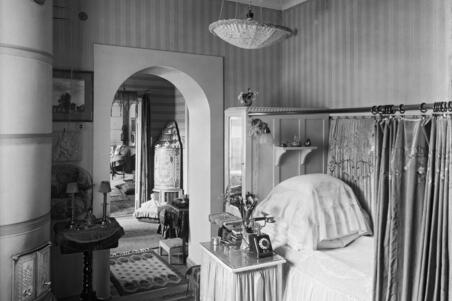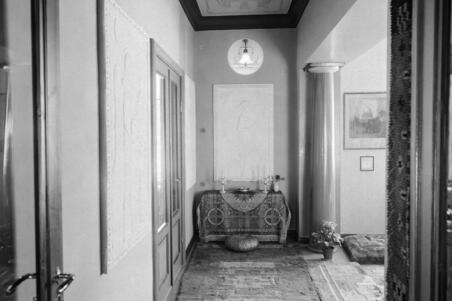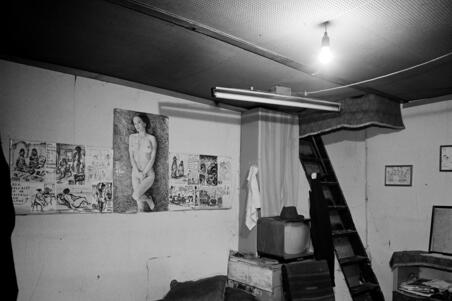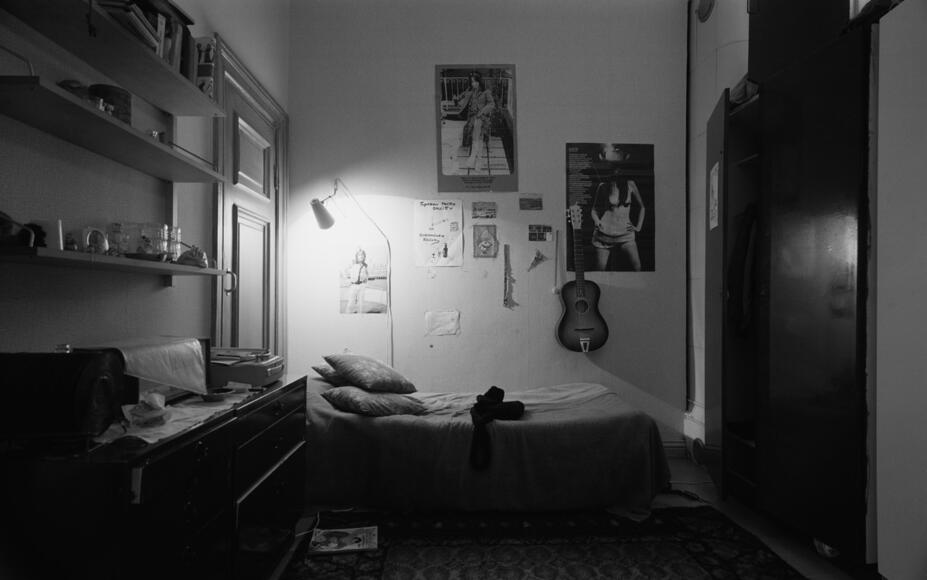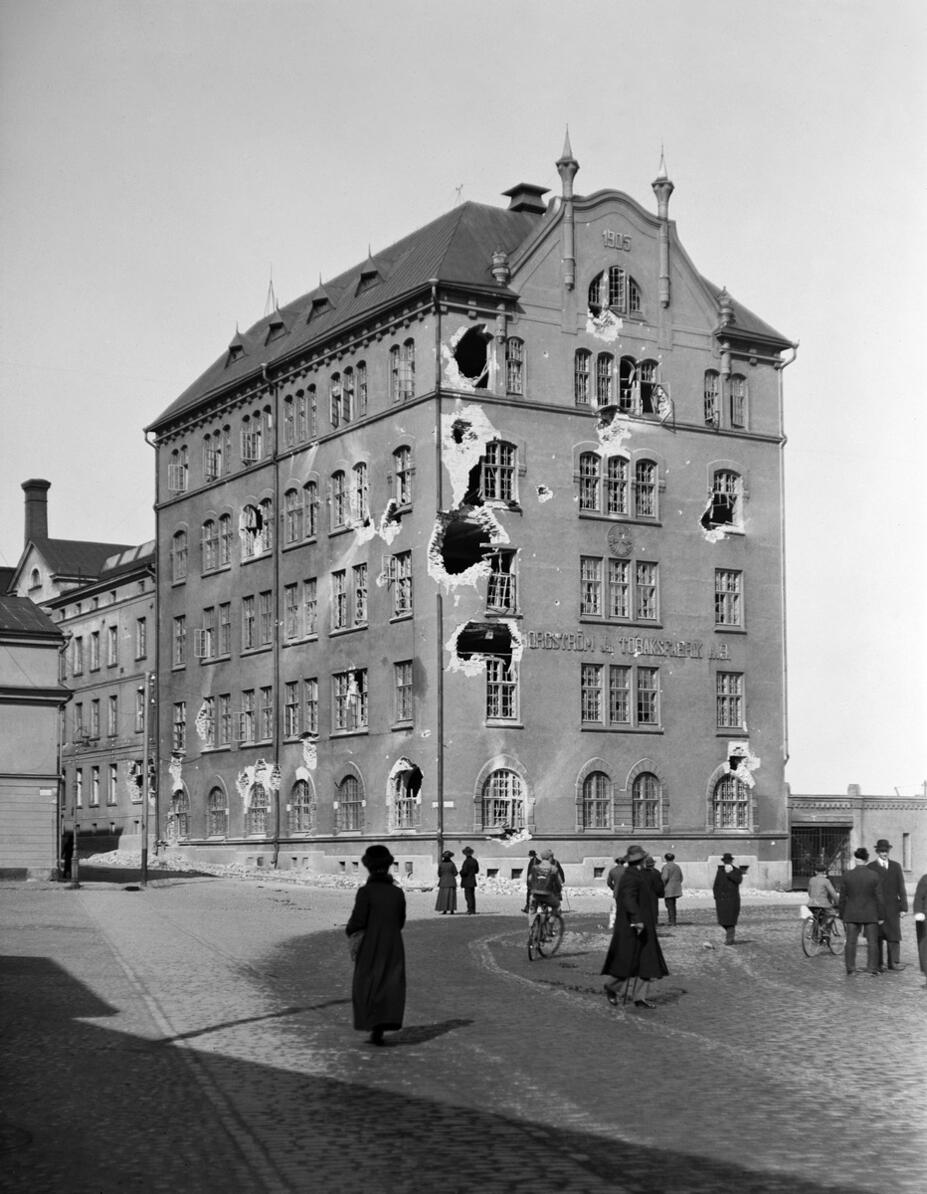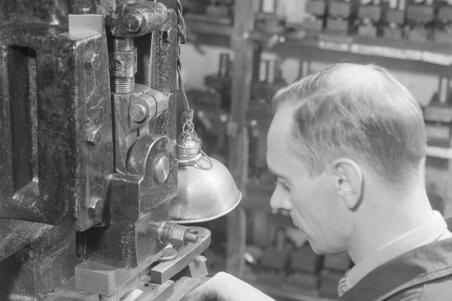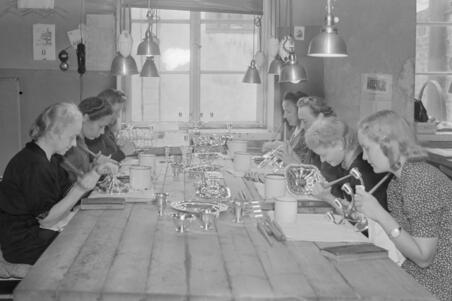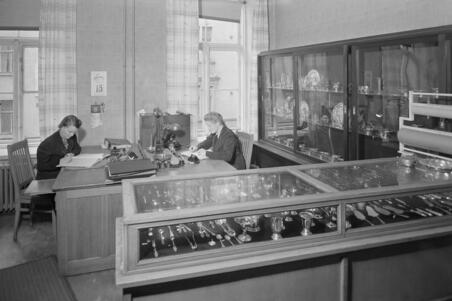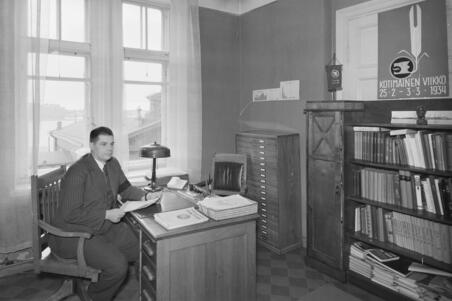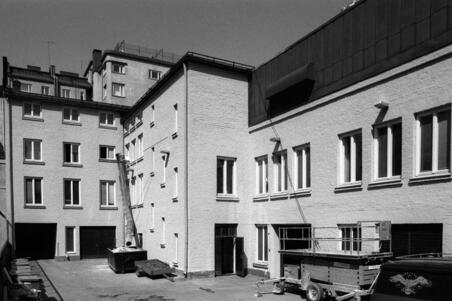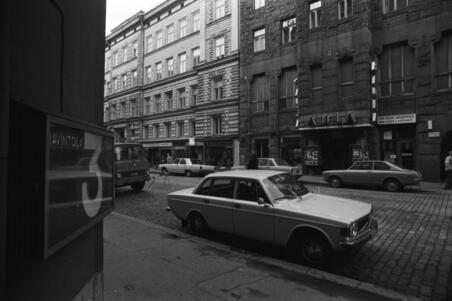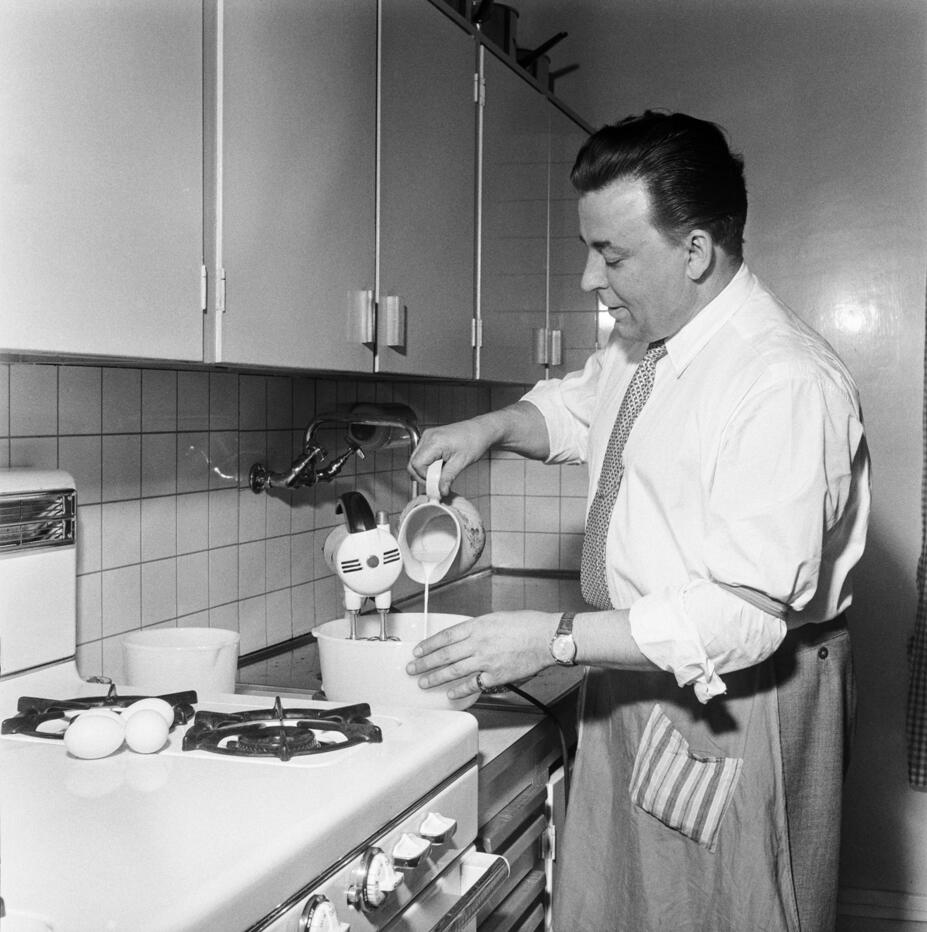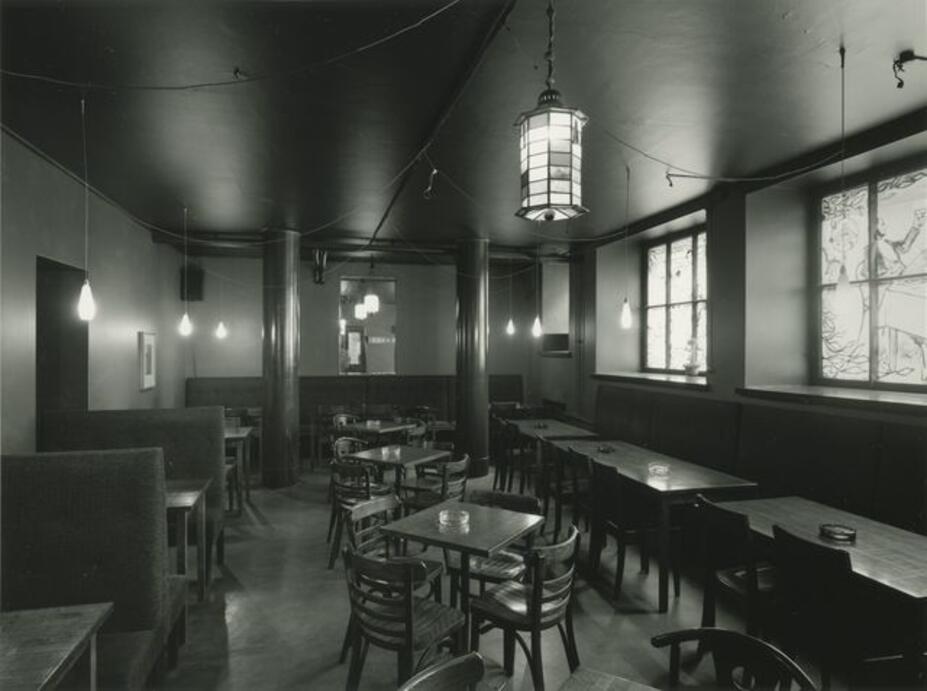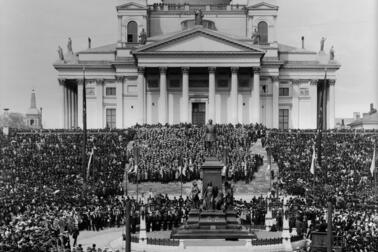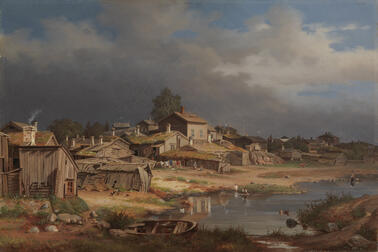The oldest port in the new Helsinki
Pohjoisranta was the home to Helsinki’s oldest port in Vironniemi, which had a jetty as early as 1652. In 1736, a wooden customs warehouse was built nearby, but it soon became too small. A new stone customs warehouse was built in 1765 at the intersection of Mariankatu and Aleksanterinkatu. It is the second oldest stone house in the city centre.
The shore has been widened several times with artificial fill, and the nearby Liisanpuistikko park (formerly known as Elisabetintori) was established on artificial fill in the early 19th century. At the time, Empire houses were built around the park for the officials of the university, which had been transferred from Turku to Helsinki.
Centre of power
Already during the Swedish rule, Kruununhaka was the centre of power with the church, the City Hall and the main guardhouse located there. The centre became even stronger once Helsinki became the capital of the Grand Duchy of Finland. The Senate Square, the Great Church (the Helsinki Cathedral), the Senate, the university and the university library were built as a representative profile of the capital city. Other architecturally and historically significant cultural and administrative buildings such as the House of the Estates, the House of Nobility, the National Archives of Finland, the Bank of Finland and the Finnish Literature Society building were built in Kruununhaka during the 19th century.
The monumental centre is like a showcase for the capital and its administration – quite literally a prominent site. Speeches, parades and demonstrations of power have taken place there, but the area has also helped create a sense of community. On the other hand, it is also a showcase for the city residents and citizens who come from the rest of Finland for demonstrations and processions.
Centre of science and civilisation
Kruununhaka is also a centre of science and culture, and many schools have operated there over the years. Finland’s first university was established in Turku in 1640. After the Great Fire of Turku, in 1828, the university was moved to Helsinki and renamed the Imperial Alexander University in Finland. The university’s main building, the library (now the National Library of Finland) and the teaching hospital were designed by Carl Ludvig Engel.
Lucina Hagman’s Uusi Yhteiskoulu school first operated for a few years in a wooden house at Kirkkokatu 12, until a new stone building was built next to it in 1902. As the school could not accommodate all the students who wanted to attend, Lucina Hagman’s niece Lisa Hagman, who was also a teacher, founded Yksityisluokat school in 1919 with her aunt’s permission. After having operated in temporary facilities for a few years, the school received its own new building, designed by architect Elsa Arokallio, at Kirkkokatu 6 in 1925. Emil Nestor Setälä, the Minister of Education, Oskari Mantere, the Director General of the National Board of Education (now the Finnish National Agency for Education), and the wives of former President Relander and the President in office, Ståhlberg, attended the building’s inauguration ceremony. Lisa went bankrupt and had to give up her school in 1933. In 1936–1973, the building housed the Helsingin tyttölukio upper secondary school. In the late 1970s, the building was renovated into the Tieteiden talo (the House of Science).
Logs and unauthorised houseboats
Up until the early 1970s, schooners and yachts were used to bring goods, such as logs, to the Halkolaituri pier. After that, the pier was used by houseboats for a while. People living in the boats went to wash in a public sauna in Mariankatu. The authorities were not pleased with the wooden motorboat Eila, built in 1947 and “registered in the fishing register of the Board of Agriculture”, Helsingin Sanomat reported. The owner said that he rescued the ship from the Aurajoki River, renovated it and moved it to Helsinki because he wanted to offer students suffering from a housing shortage affordable accommodation at a central location near the university. The students interviewed by the newspaper were happy and grateful to live in their dormitory but were soon to be evicted because the city’s ordinance did not allow accommodation operations without permission from the authorities. In addition, the vessel’s fire safety was inadequate, the living quarters were cramped and inadequately equipped, and the vessel had not been connected to the water and plumbing networks. Domestic water was brought by tanker and sewage was discharged directly into the sea. The positioning and mooring of the vessel did not comply with the Helsinki harbour regulations either.
Social stratification
In the 18th century, Siltavuori hill mainly consisted of military barracks and a windmill. There were windmills also on the Vironniemenmäki and Hämeenkatu hills. In the next century, the area around Kristianinkatu and Siltavuorenranta consisted of small huts of about 10 square metres. A hut could house up to three families. Zachris Topelius mentioned the squalid living conditions of the poor in Siltavuori and Katajanokka in the Helsingfors Tidningar newspaper, demanding improvements.
In the 19th and 20th centuries, Kruununhaka was home to both the gentry and the working class: civil servants, university employees and the bourgeoisie on the one hand, and their servants, industrial workers and students on the other. Different levels of housing could be seen on the same streets and plots. Residential buildings for the wealthier people were built at the best locations along the streets – first from wood, then from stone – while the servants lived in their own quarters in the courtyard. Houses were built for one’s family and extended family, but flats to provide rental income were added in them.
Workers could also build houses on the outskirts of Kruununhaka, such as in the Tiikeri block, where land was still affordable in the early 20th century. Building costs were kept under control by cutting back on materials and amenities: for example, instead of water closets in each flat, there was a row of outdoor toilets at the back of the garden.
In a city consisting mostly of wooden buildings where open fire was common and the fire-fighting facilities were rudimentary, the risk of fire was ever-present. A threatening fire broke out in Kruununhaka on 3 September 1852. Within two hours, five residential buildings and three outbuildings were burnt to the ground. The worst damage was suffered by Sandberg, a tile stove maker, who had no fire insurance for his newly built house, which was destroyed by the fire. After such fires, the newspapers always highlighted the need for better fire-fighting equipment and an organised fire brigade. The authorities recommended constructing houses from stone already in the early 19th century, but stone houses did not become more common quickly because they were expensive and building them required specialist skills, which were rare at the time.
Cultured commercial counsellor and tobacco manufacturer
Henrik Bogström was a successful businessman and patron of the arts. In the early 19th century, he bought three adjacent plots of land along Mariankatu street, numbers 5, 7 and 9. He was interested in new inventions and involved in the setting up of private gasworks. Naturally, gas lighting, water mains and a telephone were installed in Mariankatu. His eldest son Leonard (Link leads to external service) was a talented violinist, and friends of the family included J. V. Snellman, Zachris (Zacharias, Sakari) Topelius and Fredrik Pacius. The Borgströms arranged concerts in their home and had a lively social life.
Borgström’s tobacco factory (Borgströmin tupakkatehdas) operated in Kruununhaka from 1834 to 1928. In 1850, it was the largest industrial plant in Helsinki with almost 100 employees. At the turn of the 19th and 20th centuries, the factory filled the entire Saukko block. Designed by Waldemar Aspelin and completed in 1905, the five-storey factory building at Meritullinkatu 1 is still standing.
Factories and workers
In addition to the Borgström tobacco factory, there were several other factories and smaller workshops in Kruununhaka. The Maexmontanin viinatehdas (Maexmontan spirits factory) operated at Siltavuorenranta 18 between 1893 and 1918. It was destroyed by German artillery fire during the Civil War. Helsingin Jäätelötehdas (Helsinki Ice Cream Factory), established by the Italian Magi brothers, was located next to Mikko Mononen’s funeral parlour in an outbuilding of Liisankatu 25 between 1960 and 1998. In operation since 1922, the company is the oldest still functional ice cream manufacturer in Finland. The Hautaustoimisto Mikko Mononen funeral parlour has operated at this location since 1923 and is an integral part of the building’s visual appearance.
Established in 1925, Hopeatehdas Oy operated on Vironkatu between 1930 and 1965. The Helsingin teollisuuskoulu engineering school also operated at Mariankatu 11 in Kruununhaka from 1902 to 1929 before moving to a new building in Kallio. Neuletehdas Silmu made warp-knit fabric underwear and knitwear at Kulmakatu 5 between 1933 and 1978. The casual and comfortable clothes sold well, and the factory was expanded to the courtyard. When further expansions were no longer possible and the facilities became too small, the weaving factory moved to the Suomenoja industrial district in Espoo.
Dream factory in Liisankatu
During the heyday of cinema, there were several competing film studios in Finland, the largest being Suomen Filmiteollisuus Oy or SF, which operated between 1934 and 1963 and produced 237 feature films. During its first decade, it operated at several rented facilities in different parts of the city, but the managing director T. J. Särkkä discovered Liisankatu 14 in 1944. He rented the space, which used to be a tennis hall, and built a modern studio complex in the courtyard. The headquarters of Suomen Filmiteollisuus were on Mikonkatu but all the other operations of the huge dream factory, except for the dressmaker’s shop, were finally brought under one roof. In addition to the actual studios, the film company’s facilities included technical rooms, workshops, storage rooms, a laboratory, a cutting room, dressing rooms, staffrooms, a rehearsal theatre, a cafeteria and an office. In addition to actors, actresses, directors and scriptwriters, electricians, carpenters, chauffeurs, musicians, make-up artists and hairdressers worked at Liisankatu. As the company was a large production machine, it was easy to get one of the supporting jobs such as a clapper or a lighting crew assistant.
The studio space in Liisankatu was used to create a variety of filming environments ranging from the modern working-class home of the Suominen family in Töölö to the dugouts of The Unknown Soldier and the castle of Sleeping Beauty. The yards and stairwells in the neighbourhood were also utilised. Jari Lehessaari’s lengthy detective work to find the outdoor filming locations of the Komisario Palmu films led to the discovery that Komisario Palmu’s home was in Rauhankatu 11. In 2005, a commemorative plaque was placed on the wall of the house in the presence of invited guests.
When the film company went bankrupt, the studio’s Hall B was demolished in 1963. Hall A served as a recording studio for Yleisradio until 1979 and then as a sports facility until it was demolished in 2020 to make way for new residential buildings.
A cultural district
Finland’s uncrowned king of tango and popular music, Olavi Virta, lived in a large and luxurious flat at the corner of Meritullinkatu and Rauhankatu in the 1950s, when he was at the peak of his career. The flat had seven rooms, a sauna, a library, an aquarium embedded into the wall and a state-of-the-art kitchen with expensive appliances imported from the United States.
The Finnish national poet J. L. Runeberg, the statesman J. V. Snellman and the author Zachris Topelius lived with their families at several different addresses in Kruununhaka. Carl Gustaf Emil Mannerheim, the president of Finland from 1944 to 1946, lived at Mariankatu 5 between 1919 and 1921. Other cultural people have also lived on the same street: the authors Jalmari Finne at Mariankatu 28 in 1908–1938, Ilmari Kianto at Mariankatu 24 in 1953–1970 and Henrik Tikkanen at Mariankatu 26 in 1962–1964.
Kruununhaka was once home to two restaurants popular with artists, Kirja and Savanna. Finland’s oldest trade union, Helsingin Kirjatyöntekijäin Yhdistys ry (the Book Workers’ Association), built Kirjan talo at Siltavuorenranta in 1935, and the Kirja restaurant was located there. It was popular among the cultural crowd especially in the 1960s and 1970s. The restaurant was closed in 2007, at which time the space was turned into a private club. Takalan ruokala (Takala canteen) was opened at Mariankatu 19 in 1936, and the same space subsequently briefly housed the Louhi restaurant. Between 1944 and 2004, the space was occupied by the Savanna restaurant, famous for its stained-glass windows and popular among artists and students who lived nearby.
